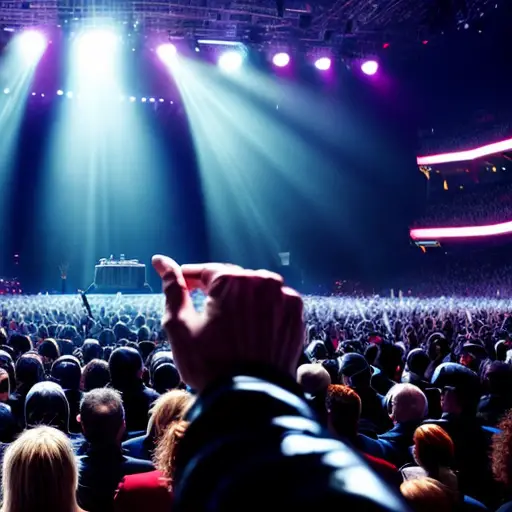Understanding the Basics of Compact Digital Cameras
Alright, folks, let's dive into the wonderful world of compact digital cameras and unravel the mysteries of capturing concert photos like a pro! First things first, you need to understand the basics. These little powerhouses may be small in size, but they pack a punch when it comes to capturing those epic moments on stage. So, grab your camera and get ready to rock! Now, before you start snapping away like a maniac, familiarize yourself with the different shooting modes. Concerts can be tricky beasts, with ever-changing lighting and fast-moving performers. So, make friends with the manual mode and learn to adjust your settings on the fly. Trust me, it's like having a backstage pass to photography awesomeness!
Mastering Composition and Lighting Techniques for Stunning Concert Photos
One interesting fact about compact digital cameras is that they have revolutionized the way concert photos are taken. In the past, capturing high-quality images in low-light and fast-paced concert environments was a challenge, often requiring professional-grade equipment. However, compact digital cameras now offer advanced features such as high ISO sensitivity, fast autofocus, and image stabilization, allowing even amateur photographers to capture stunning concert photos with ease. These cameras are lightweight and portable, making them ideal for concert-goers who want to document their experiences without carrying bulky equipment. With the advancements in technology, compact digital cameras have truly democratized concert photography, enabling anyone to capture and share their favorite moments from live performances.
Alright, my fellow concert enthusiasts, let's talk about the art of mastering composition and lighting techniques for those jaw-dropping concert photos with our trusty compact digital cameras. Now, when it comes to composition, don't be afraid to get creative and experiment with different angles. Capture the energy of the crowd, the intensity of the performers, and the overall atmosphere of the concert. And let's not forget about lighting! Concerts can be a challenging lighting situation, with spotlights, lasers, and strobes galore. Embrace the chaos and use it to your advantage. Play with shadows, silhouettes, and bursts of light to add drama and intrigue to your shots. Remember, my friends, with a little bit of composition magic and a keen eye for lighting, you'll be capturing stunning concert photos that will make your friends green with envy!
Navigating the Challenges of Low-Light Environments and Fast-Moving Subjects

Alright, my fellow concert photographers, let's tackle the challenges of low-light environments and fast-moving subjects with our trusty compact digital cameras. We all know that concerts are notorious for their dimly lit stages, making it a real test of our photography skills. But fear not, for we have some tricks up our sleeves! First and foremost, let's talk about ISO. In low-light situations, crank up that ISO to capture more light and reduce the risk of blurry photos. However, be mindful of the trade-off - higher ISO can introduce noise, so find the sweet spot that balances brightness and image quality.
Now, let's address the issue of fast-moving subjects. Concerts are all about energy and movement, so it's crucial to freeze those moments in time. One technique to achieve this is by using a fast shutter speed. Set your camera to shutter priority mode and experiment with speeds around 1/250th of a second or faster. This will help you capture those electrifying jumps, hair flips, and guitar solos with crystal-clear precision.
But wait, there's more! Don't forget about autofocus. In the midst of a concert frenzy, your camera's autofocus system can be your best friend. Set it to continuous autofocus mode to track your subject's movement and ensure sharp focus. Some compact digital cameras even have face detection or subject tracking features, so take advantage of those to make your life easier.
Lastly, let's talk about the importance of patience and anticipation. Concerts are unpredictable, and you never know when that epic moment will happen. So, be ready at all times, keep your finger on the shutter button, and anticipate the action. It might take a few shots to get the perfect one, but trust me, that one shot of the lead singer mid-air, bathed in a spotlight, will be worth it.
So, my friends, embrace the challenges of low-light environments and fast-moving subjects. With the right settings, techniques, and a dash of patience, you'll capture those unforgettable concert moments with your compact digital camera like a true rockstar photographer!
Post-Processing Tips and Tricks to Enhance Your Concert Photos
A fun fact about compact digital cameras is that they have a special concert mode! This mode is specifically designed to capture stunning photos in low-light environments with fast-moving subjects, such as concerts. So, next time you're at a concert and want to capture those epic moments, don't forget to switch on the concert mode on your compact digital camera for amazing shots!
Alright, fellow concert photographers, let's take our concert photos to the next level with some post-processing magic! Once you've captured those epic moments with your trusty compact digital camera, it's time to enhance them and make them truly shine. First off, let's talk about exposure adjustments. Concert lighting can be tricky, so use your editing software to fine-tune the exposure and bring out the details in the shadows and highlights. Next, let's play with colors. Concerts are all about vibrant lights and electric atmospheres, so experiment with saturation and vibrance to make those colors pop. Don't be afraid to get creative and try different color grading techniques to give your photos a unique and artistic touch. Lastly, let's not forget about sharpening. With fast-moving subjects, it's common to have a slight loss of sharpness. Use the sharpening tool in your editing software to bring back that crispness and make your photos look even more professional. So, my friends, unleash your creativity in the post-processing stage and watch your concert photos transform into visual masterpieces!
